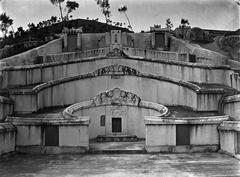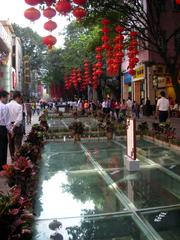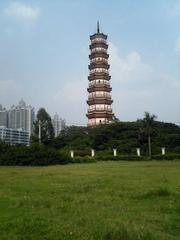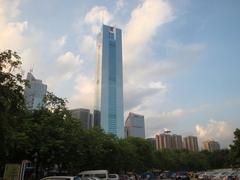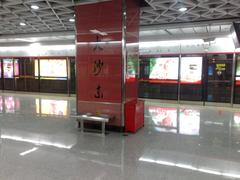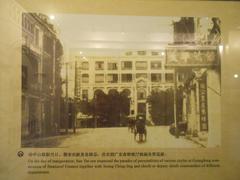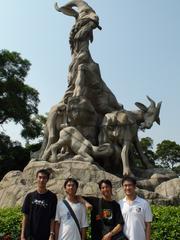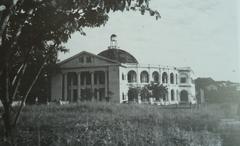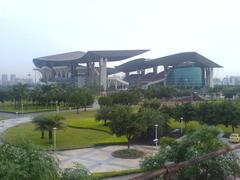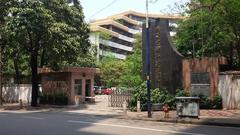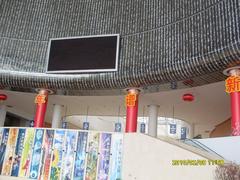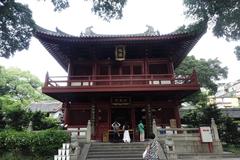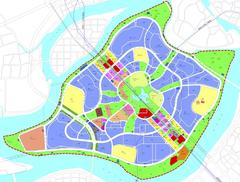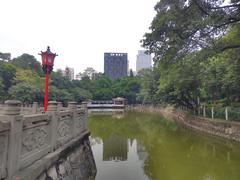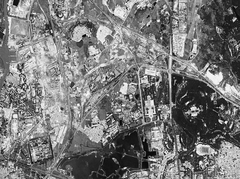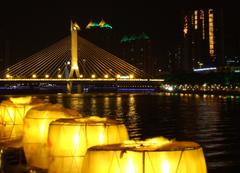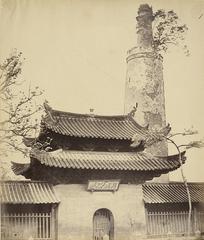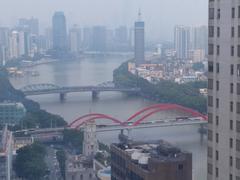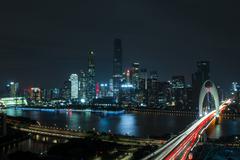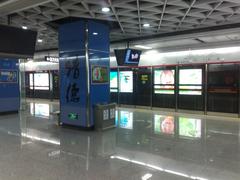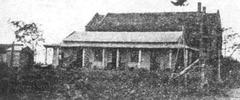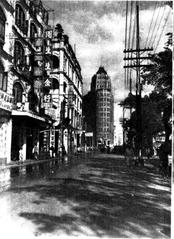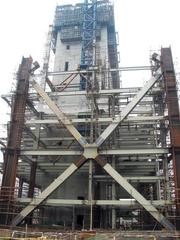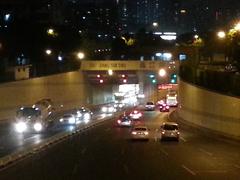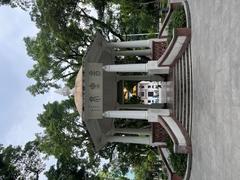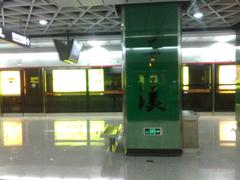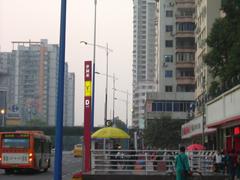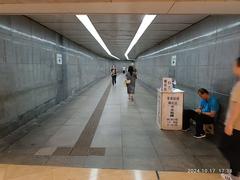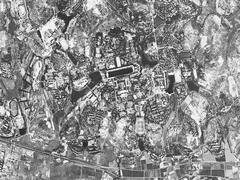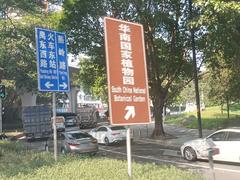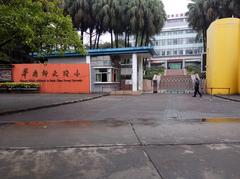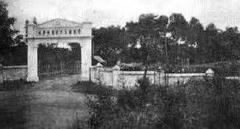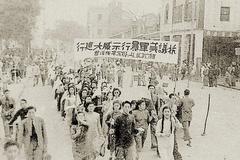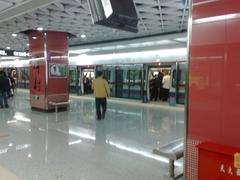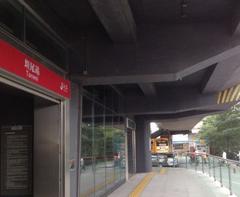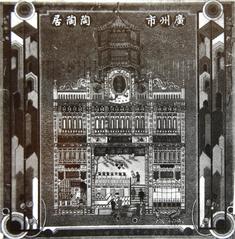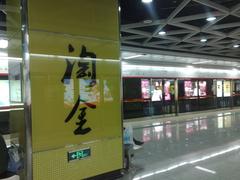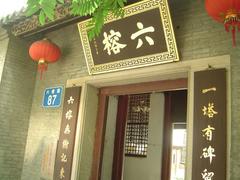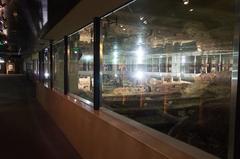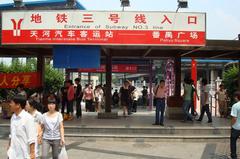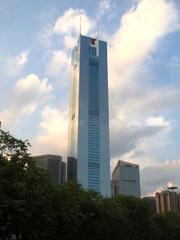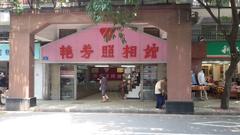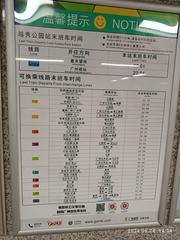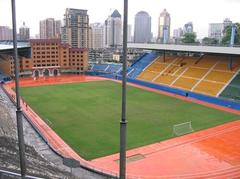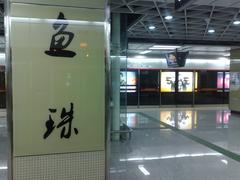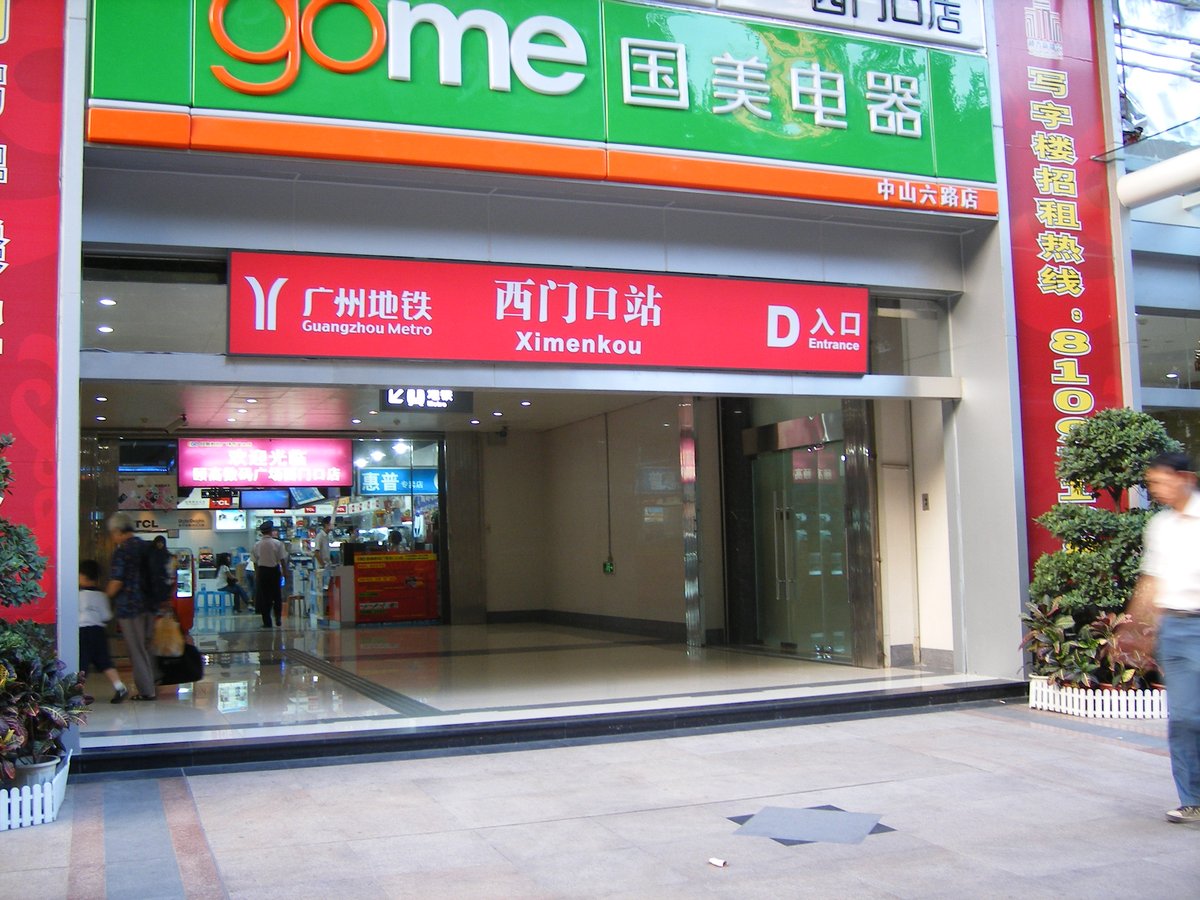
Ximenkou Station Guangzhou: Visiting Hours, Tickets, and Travel Guide
Date: 14/06/2025
Introduction
Located in the vibrant Yuexiu District of Guangzhou, Ximenkou Station (西门口站) is more than just a key metro stop—it’s a gateway to the city’s storied past and dynamic present. As an important node on Line 1 of the Guangzhou Metro since 1999, Ximenkou provides seamless access to some of Guangzhou’s most revered landmarks, including Guangxiao Temple, the Temple of the Six Banyan Trees, Huaisheng Mosque, and the lively Beijing Road Pedestrian Street. This comprehensive guide covers operating hours, ticketing, accessibility, nearby attractions, and essential travel tips to help you make the most of your visit to Ximenkou Station and its culturally rich surroundings.
For official metro schedules and more visitor information, refer to the Guangzhou Metro website. For cultural insights and attraction details, see China Discovery and Guangzhou Insider.
Table of Contents
- Introduction
- How to Visit Ximenkou Station
- Nearby Historical Sites and Visiting Information
- Exploring Ximenkou: What to See and Do
- Special Events and Cultural Experiences
- Visitor Tips
- Frequently Asked Questions (FAQs)
- Summary Table: Key Historical Milestones
- Plan Your Visit
- Visual Resources
- References and Further Reading
How to Visit Ximenkou Station
Operating Hours:
Ximenkou Station operates daily from approximately 6:00 AM to midnight. For the most current schedule, check the official Guangzhou Metro website.
Tickets:
Metro fares are affordable and distance-based, typically ranging from ¥2 to ¥8. Purchase tickets at station vending machines, counters, or use a rechargeable Yang Cheng Tong metro card. Mobile payment options are also widely accepted.
Accessibility:
The station is fully equipped with elevators, tactile paving for the visually impaired, and barrier-free access points, making it inclusive for all travelers.
Travel Tips:
- Avoid peak metro hours (7:30–9:00 AM, 5:30–7:30 PM) for a more comfortable journey.
- Download metro maps or use navigation apps like Audiala for offline guidance and tour options.
Nearby Historical Sites and Visiting Information
Guangxiao Temple (光孝寺)
- Distance: 7-minute walk (~500 meters) from Ximenkou Station (Exit C).
- Visiting Hours: 8:00 AM – 5:30 PM daily.
- Tickets: Free entry; donations are appreciated.
- Highlights: Ancient iron pagoda, Mahavira Hall, centuries-old banyan trees, Buddhist relics.
- Tips: Early morning visits are tranquil and ideal for photography.
Huaisheng Mosque (怀圣寺)
- Distance: Short walk from Ximenkou Station.
- Visiting Hours: 9:00 AM – 4:30 PM (closed Fridays for worship).
- Tickets: Free entry.
- Highlights: 36-meter Guangta (Lighthouse Tower) minaret, unique blend of East Asian and Islamic architecture.
- Tips: Dress modestly and avoid visiting during prayer times.
Temple of the Six Banyan Trees (六榕寺)
- Distance: 5-minute walk (~300 meters) from Ximenkou Station.
- Visiting Hours: 8:00 AM – 5:00 PM.
- Tickets: Modest entrance fee.
- Highlights: Iconic Flower Pagoda, intricate Buddhist carvings, serene courtyards.
Beijing Road Pedestrian Street (北京路步行街)
- Distance: 10–15-minute walk (~1 km).
- Features: Bustling shopping area, local Cantonese eateries, archaeological relics beneath glass panels.
Sacred Heart Cathedral (石室圣心大教堂)
- Distance: 1.5 km from Ximenkou Station.
- Visiting Hours: Open outside mass times.
- Highlights: Gothic Revival architecture, twin granite spires, stained glass windows.
Chen Clan Ancestral Hall (陈家祠)
- Distance: Two metro stops from Ximenkou Station on Line 1.
- Highlights: Guangdong Folk Art Museum, elaborate wood and stone carvings, traditional Lingnan architecture.
Shamian Island (沙面岛)
- Access: Via metro and a walk.
- Highlights: Colonial-era architecture, tree-lined boulevards, historic churches, riverside cafés.
Qingping Chinese Medicine Market (清平中药材市场)
- Access: Near Shamian Island.
- Features: Traditional medicine stalls, herbs, dried seafood, and local produce.
Exploring Ximenkou: What to See and Do
- Stroll through historic streets lined with traditional shops and vibrant markets.
- Discover museums such as the Guangdong Museum of Folk Art at the Chen Clan Ancestral Hall and Guangzhou Museum (Zhenhai Tower) in Yuexiu Park.
- Experience local life in parks like Yuexiu Park, where you can observe tai chi or cultural performances.
- Savor authentic Cantonese cuisine at nearby eateries and teahouses.
- Enjoy guided heritage walks or join craft workshops for hands-on cultural experiences.
Special Events and Cultural Experiences
- Guangxiao Temple: Hosts Buddhist festivals and meditation sessions, particularly during Chinese New Year and the Lantern Festival.
- Huaisheng Mosque: Offers open days for visitors to learn about Islamic culture.
- Local Streets: Cultural performances and night markets are frequent, especially on Beijing Road and Shangxiajiu Pedestrian Street.
Visitor Tips
- Footwear: Wear comfortable walking shoes; many streets and temple grounds have uneven surfaces.
- Weather: Carry water and sun protection during summer months.
- Language: English signage is common, but learning basic Mandarin or Cantonese phrases is helpful.
- Etiquette: Dress modestly and behave respectfully at religious sites. Photography restrictions may apply in certain areas.
Frequently Asked Questions (FAQs)
Q: What are Ximenkou Station’s operating hours?
A: 6:00 AM to midnight daily.
Q: How do I purchase metro tickets?
A: Use vending machines, station counters, or a rechargeable metro card/Yang Cheng Tong.
Q: Are accessibility features available at Ximenkou Station?
A: Yes, elevators, tactile paving, and barrier-free access points are provided.
Q: What major historical sites are near Ximenkou Station?
A: Guangxiao Temple, Temple of the Six Banyan Trees, Huaisheng Mosque, Sacred Heart Cathedral, Chen Clan Ancestral Hall, and more.
Q: Are guided tours offered?
A: Yes, heritage walks and guided tours are available through local operators and visitor centers.
Summary Table: Key Historical Milestones
| Period | Event/Development | Reference |
|---|---|---|
| Qin/Han Dynasties | Construction of city walls and West Gate | Wikiwand |
| Western Han Dynasty | Guangxiao Temple site as royal residence | Guangzhou Insider |
| 3rd–10th centuries | Emergence of major religious sites (Buddhist, Islamic) | Guangzhou Insider |
| Ming/Qing Dynasties | Commercial and cultural flourishing | China Highlights |
| 1999 | Opening of Ximenkou Metro Station | Wikiwand |
Plan Your Visit
Start your Guangzhou adventure at Ximenkou Station—the city’s intersection of history and modern urban life. With easy access to temples, museums, markets, and cultural streets, visitors can immerse themselves in a vibrant blend of the past and present. Use the Audiala app for guided tours, up-to-date metro information, and interactive maps. For more travel inspiration, check our related articles and follow us on social media for the latest updates.
Visual Resources
-
Suggested images:
- “Exterior of Ximenkou Station entrance with signage”
- “Guangxiao Temple Mahavira Hall”
- “Huaisheng Mosque minaret at sunset”
- “Temple of the Six Banyan Trees near Ximenkou Station”
- “Sun Yat-sen Memorial Hall Guangzhou”
-
Interactive Map:
- Embed a map highlighting Ximenkou Station and nearby attractions for easy trip planning.
References and Further Reading
- Guangzhou Metro website
- Guangxiao Temple information
- Huaisheng Mosque information
- China Highlights - Guangzhou Facts
- Asia Odyssey Travel - Guangzhou
- Wanderlog - Best Places to Visit for Arts and Culture in Guangzhou
- High Speed MTR - Attraction Guide Guangzhou
- China Discovery - Guangzhou Attractions
- East China Trip’s metro guide
- Welcome to China - Guangzhou Travel Tips
- Wikiwand - Ximenkou Station
- Business in Guangzhou - Best Things to Do
- Trip.com - Guangzhou Metro Map

